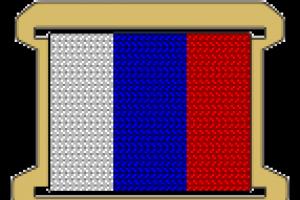Even the smallest fountain can transform the landscape of a dacha or private home beyond recognition. This decorative structure will definitely become a favorite relaxation spot on your site, because it will give you the opportunity to unite with nature at any moment. Do you want this to become a reality faster? There is nothing super complicated here - anyone can make a fountain with their own hands. Don't believe me? Then to your attention step-by-step instruction with a photo, following which you can quickly and without the involvement of professionals get an effective and functional fountain.
First of all, you need to choose suitable option fountain for your site. We are talking about its dimensions, shape and materials. When deciding this issue, focus on the area and style of the yard of your dacha or private house.
So, for a large area it is better to choose a classic sculptural model that will become the center landscape composition. And for a modest courtyard, fountains in the form of small architectural forms are suitable: sea shells, fairy-tale characters, houses, pots and other similar figures.
 An original fountain made from scrap materials
An original fountain made from scrap materials But you don’t have to buy a ready-made sculpture, because you can also build a fountain with your own hands. The simplest option is a structure made of stones. To make it, place large flat stones on top of each other, use an electric drill to make holes in each of them and string all the resulting products onto copper pipe- it is through it that water will flow to the top of the structure. Then close the gaps with small stones and treat the cracks silicone sealant.
Choosing a location
The next step is to decide where exactly on the site the fountain will be located. In order for a structure to fully fulfill its aesthetic function, it cannot be installed “anywhere” - it is important to choose the best location. And for this you need to take into account several nuances.
- Firstly, the fountain does not belong in an area that is too open, since under the influence of active sunlight the water may begin to “bloom.”
- Secondly, the fountain cannot be placed among powerful trees - their roots can cause deformation of the tank and waterproofing. In addition, leaves, fluff, fruits and tree seeds will constantly pollute the fountain.
- Thirdly, the structure should not be too close to the house, otherwise moisture will fall on its walls with the wind.
- Fourthly, it is undesirable to place the fountain in the open wind so that its gusts do not “disrupt” the jets.
 Position the fountain so that it can be seen from different parts plot
Position the fountain so that it can be seen from different parts plot Thus, the ideal location for a decorative fountain is light partial shade surrounded by flowers and low bushes.
When you choose a place, proceed directly to arranging the fountain. It assumes phased implementation three main groups of work:
- tank preparation;
- pump installation;
- installation and decoration of the fountain.
Preparing the tank
In order for the fountain to be durable and solid, it is necessary to equip a special reservoir for hydraulic equipment and water. This is done as follows:
- Dig a pit of pre-calculated depth and the diameter you need.
Important! The depth of the reservoir should be below ground level so that the soil around the fountain bowl is not washed away and the base is not deformed.
- Pour a thin layer of sand onto the bottom of the resulting hole and carefully strengthen it side walls bricks.
- Cover inner surface pit with a thick plastic film - it will prevent the passage of water.
- Fix the film along the upper edge of the tank and treat the seams with frost-resistant silicone sealant. Place stones at the bottom of the pit, distributing them over the surface of the film. The stones should not be sharp so as not to deform the film.
- Install a small emergency drain near the pit to prevent the water level in the tank from rising.
 Construction of the fountain
Construction of the fountain Installing the pump
The fountain will not be able to work without the most important mechanism - the pump. It is he who is responsible for the continuous movement of water flow. General principle The operation of the pump is simple: water is discharged through a nozzle into the reservoir, then enters the pipeline, where it undergoes coarse and fine cleaning, and then the already purified water is sent back to the nozzle.
The quality of the fountain’s functioning directly depends on the type of pump:
- Submersible - works on the principle of a centrifuge and is located in the center of the fountain tank under water. It's cheap, but reliable device, for the installation of which no fasteners are needed - the submerged pump is quite heavy, so it does not budge on its own. It is suitable for small weak fountains.
 Diagram: fountain pump operation
Diagram: fountain pump operation - Surface is a more serious type of pump, which is installed not inside the tank, but on its edge on the surface of the earth. This device is designed for large fountains with complex designs.
Pipeline for pumping system can be constructed from plastic pipes. Their optimal diameter is 16 mm.
Advice. In order to enhance the operation of the pump, additionally install a pressure tank - it will guarantee a constant pressure of the water flow.
Fountain decoration
After the main functional elements are installed, you need to take care of installing the fountain itself, or rather its upper part. If you use ready-made sculptures, then they should include special fastenings for installation. But a homemade stone fountain is best installed on metal slats previously laid on top of the tank.
Then start decorating the structure. The fountain can be decorated with plants, different-sized stones, clay figurines, microsculptures and any other details that seem appropriate to you on your site.
 You can decorate the fountain with stones, sculptures and plants
You can decorate the fountain with stones, sculptures and plants Don’t forget about such an effective decorative tool as lighting. These can be underwater lights, light strips, floating lanterns, land lamps - here you are also unlimited. But remember that lighting structures must be completely sealed, and all their contacts must be protected from water as reliably as possible, otherwise it will be unsafe to use them.
When all work is completed, fill the tank with water and start the fountain.
As you can see, to make a beautiful fountain with your own hands, you don’t need to work hard or spend a lot of money. Do not deviate from the instructions, use quality materials and don’t be afraid to experiment with decor – by following these three simple rules, you will definitely get a functional fountain that will delight your eyes and set you in a positive mood for many years.
Which fountain to choose for your dacha: video
Now many people have a desire to have (especially in summer) a small fountain that would make the atmosphere more exotic. But many are sure that this idea is beyond their means. You can try to make this dream come true at home. A homemade one can be made in a few hours, even if you have never created such things.
Such products are divided into indoor (decorative) and yard, arranged in summer cottages or courtyards multi-storey buildings(if they do not interfere with garages, etc.). There are many different designs for home fountains. Let's consider how it is possible to make at least a small one with your own hands indoor fountain. To begin with, let’s think through the future design according to the following parameters:
- Desired sizes.
- Form.
- The number of cascades of your fountain.
- Correct design of the closed water system of the product, otherwise the fountain will not work normally.
Now you have passed the first stage, and you have a drawing of your fountain on paper. Now comes the next stage: you need to prepare materials and parts for assembling your idea. Here is a rough list:

- Small. If you are planning to do desktop version, then you can use an aquarium pump.
- Hermetically sealed container made of metal or plastic. For these purposes, you can adapt any utensils available in the house (vase, plastic bucket, basin).
- For decorative design you can use pellets, shells, decorative colored glass, etc.
- Electrical cords, sockets for connecting the pump.
Making your own fountain at home
Assembly begins by installing the pump on the lower part (bottom) of the container you choose. To do this, you can use synthetic adhesives or suction cups (if you are using an aquarium pump, they are included in the kit). The water is raised to the upper level using a tube (plastic, silicone). We put it on the outlet of the pump and secure it strictly vertically. Next, to disguise the pump and isolate it from the external environment, it is necessary to cover the equipment with a homemade or purchased frame of suitable size. If you are planning to make it yourself, then do not forget to prepare the necessary materials and tools for this.
If you have a plastic box with dimensions suitable for the pump, then cut out ventilation holes, use it as a casing. On extreme case You can put the pump under a layer of colored pebbles. Next, you need to turn on your imagination, since the final result depends on it. We take any container we like (a beautiful mug, a large sink, a plate, etc.)
It should be installed at some elevation.

This can be achieved by creating a slide of stones with your own hands, on which we mount our decorative tank with epoxy glue, into which a tube from the outlet end of the pump is inserted.
If there are no stones, then you can make cubes from polystyrene foam or use ready-made plastic ones. To do this, we drill a hole in the vessel we have chosen along the diameter of the tube that goes into the tank (into its internal cavity), 6-12 mm. We do it ourselves by sealing the hole and fixing all the elements using waterproof glue and sealants.
It seems that the days have passed when Russians’ summer cottages and private courtyards were exclusively an area with laid out beds and planted trees and shrubs. Modern garden plot, large private yard or a tiny backyard within an urban home can become a work of landscape art. Beautiful flower beds, neat garden paths, barbecue areas, swings and gazebos – there are plenty of options for arranging even modest-sized yards. But as the Japanese say, they are great specialists in creating the perfect landscape design– for a harmonious environment in your yard or summer cottage there must be three components: plants, stones and water. It is the introduction of a source of water into the arrangement local area will be the subject of this publication. let's consider possible options creating a fountain at your dacha or personal plot, within a small courtyard or a huge local area.

Types of fountains for landscape design of a site
The generally accepted opinion that a fountain in a summer cottage is expensive, labor-intensive and generally troublesome has long been unfounded. Organize a source with constantly circulating water on our own It’s not difficult if you approach the issue with care and accuracy. Well, there are so many ready-made options in modern stores that it’s easy to get confused.




Choosing a fountain, like any device for decorating a local area, requires precise calculations and the correct selection of shapes, sizes and materials. Before you go to the store or the Internet in search of videos with master classes on making a fountain with my own hands, you need to decide what kind of fountains there are and how they differ from each other.



This type of fountain can be considered the simplest in terms of design and installation. The peculiarity of the submersible mechanism is that the jet shoots directly from the water. But this option requires the presence or creation of a small reservoir - an artificial pond or a large bowl of water that is immersed in the soil. The submersible version of the fountain is one of the least expensive. It is enough to select a suitable spray nozzle that forms a jet and fix the hose from the pump. There is no need to install additional technical devices.


These are the designs we imagine most often when we talk about fountains in parks and squares. This type of fountain requires the presence of some decorative elements that imitate a water source. A stationary fountain for a summer house or private courtyard can use jets, sculptures or their compositions, and various elements of landscape decor.




The design of a stationary fountain itself is somewhat more complex than a submersible type mechanism, but such a decorative element of landscape design also looks more respectable and impressive. This is especially true in cases where it was possible to find a fountain model that fits the overall design concept of the site (or make it yourself).



Among the many models of stationary fountains, products made of polymer material, which perfectly imitates natural stone. Products made from polystone externally look like models made from natural stone, but at the same time they cost significantly less, are lightweight and easy to install and operate.



Fountains made of polystone can be either one object or a composition of several elements - there are countless options. In any case, the material is not subject to rotting or deformation, and is able to withstand jets of water even under fairly high pressure.



Fountains in which water flows over the main element or a whole composition of objects look stylish, modern and creative. It seems that the stone itself is a source of moisture. Meanwhile, water flows through a hose, which is located in the center of the hole of the boulder (or any other decorative element).



Fountain-waterfall “falling water”
Not fewer varieties fountains that imitate both jets and water falling from something like a waterfall. In such a combined composition, the fountain jets, rising upward, do not easily fall back into the water, but end up on a cascade of stones or stepped decorative elements.






Making a fountain with your own hands
So, you have decided on the type of fountain and are ready to get to work. But wait until you dig the pit. It’s not for nothing that popular wisdom says: “measure seven times, cut once.” It is necessary to carefully plan your actions, make the necessary calculations, and carry out a series of preparatory work.




Choosing a place for a fountain
A successful choice of area for the location of the fountain is an important item on the to-do list for arranging the local area. After all, we don’t want to not only decorate the site, but also create an atmosphere of peace and comfort, in which the sound of running water will allow you to relax and forget about the hustle and bustle of everyday work. On the one hand, I want the fountain to be in a zone of constant visibility, so that it can be admired from anywhere on the site (but most often this desire is unattainable, because there are buildings, trees and tall bushes on the territory), on the other hand, to be located near the recreation area .




If you are planning to manufacture a submersible fountain, then you need to consider the following nuances:
- The fountain should not be placed directly under a tree or tall bush - falling leaves will not only clog the water, but can also cause the pump to break down. In turn, the root system of a tree can cause destruction of the entire structure;
- a fountain in even a small body of water will cause high humidity and possible damage to the facade if it is located in close proximity to a house or other buildings;
- It is also important to take into account the wind rose in your area, at least the predominant wind direction. If you place a reservoir with a fountain on the leeward side, then most time will have to be spent cleaning up garbage, and not enjoying the beauty of the structure and the sounds of flowing water;
- but also absolutely open area yard - not the best option for the location of the fountain (especially for regions of our country where summers can be very hot). During the day, light and shadow should replace each other. Otherwise, the water in the tank may become very hot, which will damage the pump. And the water will begin to turn green faster in constantly hot water.



Choosing a bowl for an artificial pond
In this matter, the determining criteria will be the type of fountain and the size of the reservoir being manufactured. In order to optimize the costs and time of making a fountain with your own hands, the easiest way is to choose a ready-made bowl made of composite from the available assortment of stores. A wide range of shapes, sizes and colors will allow you to do this without much effort.


Experts recommend choosing bowls made of composite materials because they do not undergo thermal deformation. If your pond has small sizes, and it’s not important for you to make any choice original form, then it’s better to buy ready-made option. Otherwise, you will have to make the bowl yourself - this is a labor-intensive process that takes a lot of time. But as a result, you will get the ideal vessel for your country pond. This topic is extensive and worthy of a separate publication. But not all elements for the garden fountain have been selected yet.




Choosing a pump for a DIY fountain
A pump for a fountain must not only push a stream of water to the desired height, as is required in a country waterfall or an artificial stream, but also push the water out from the right pressure to a certain height above the surface. Of course, there are formulas for searching required power pump for a given jet height and optimal hose diameter, but for those who do not want to delve into the details of the calculations, we offer the following list of correspondences:
- for a jet height of 50 cm, the hose diameter is 1.5 cm, and the pump capacity is 1000 l/h;
- for height 100 cm, diameter – 1.5 cm, pump 2000 l/h;
- jet 150 cm, diameter – 2.5 cm, productivity 3000 l/h;
- pressure height 200 cm, hose diameter 2.5 cm, power 5000 l/h;
- for a jet with a height of 300 cm or more, you will need a hose with a diameter of 2.5 cm or more, and a pump with a capacity of 8000 l/h or more (but such designs are used extremely rarely for country landscapes).


There are many varieties of attachments for creating original types jets, they all leave their mark on the choice technical characteristics equipment. In any case, all parameters of the pump will be indicated in its marking, on the box and in the technical data sheet of the product. If you want to make a “geyser” type fountain or use original attachments (such as “bell, etc.), then contact the consultants in the store for help.


Decorating a country or garden fountain
Of course, the main criteria for choosing decor for a fountain will be only your imagination and financial capabilities. Although, for many types of decor the costs will be symbolic. For example, if you choose a polystone fountain model, then decor is not needed at all. Such models are most often presented in a fairly laconic design and do not require decorations.



If you want to create the most natural atmosphere, close to the environment of wild nature, throughout the entire area in general and near the fountain in particular, then it would be a good idea to adhere to the following simple recommendations:
- to decorate the fountain, use stones of one or maximum two types, because in nature it is rare to find a pile of stones that differ significantly in their aesthetic qualities;
- plants that will be in close proximity to a fountain or located in a pond are best chosen from the class of those for which water or very high humidity is their natural habitat;
- if in yours artificial reservoir will be inhabited by fish, then you need to find out in advance whether a particular decorative species is able to calmly endure the noise of falling water.




In custody
The listed fountain options and the photos proposed for them are only part of the ways to create an original source of water for summer cottage, a private yard or just a local area. There is no limit to the imagination for creating combined models and using non-standard materials. Whatever your choice, it is important that any fountain will give your site a special flavor, make the landscape design complete, more harmonious, increase humidity and create a peaceful, relaxing atmosphere in the recreation area (or near it).




IN Lately Particularly popular are the so-called “vertical fountains”, which are literally a “water wall”. They look stylish, modern and easily fit into almost any landscape design style without taking up much space.







In specialized stores today you can buy very original ones. The range of such goods is quite large, as they say, for every taste and color. Many people like it when they can hear the sound of a small trickle of water in their home. These sounds allow you to relax and calm down after a hard day at work. However, most consumers have no idea what can be done. special costs It does not require, nor does it require knowledge.
Material for construction
So, below we will describe how to make a fountain at home. For creating original design you will need:
- Glue.
- A container that will serve as the base for the fountain.
- Approximate diagram of the fountain
- Large sink.
- A small piece of hose commonly used for cleaning aquariums.
- Polyethylene film.
- Expanded clay, decorative multi-colored soil and shells of various shapes and sizes.

A large sink will serve as the central detail of the entire composition. A pump and hose are needed to pump water, and multi-colored soil, shells and expanded clay are needed for decoration. In addition, you need a small piece polyethylene film. So, expanded clay can be purchased at any flower shop. As for black, red soil, it is better to use a special mixture for aquariums.
Selecting a container
A home fountain should be durable enough and at the same time beautiful. Therefore, the container for its base should be selected more carefully. The first step in making a structure is selecting a vessel. In this case, you can take a flower pot for a fountain. If there is no such container, then you can use a flower pot, a beautiful basin, a clay vase, etc.
The most important thing is that the vessel does not leak. If, for example, in flower pot If there are holes, they should be sealed with epoxy glue.
Choosing a pump
Since anyone can make a fountain at home, it’s worth Special attention pay attention to the pump. After all, not everyone understands them. There are several with a sprinkler on the tip and a regular one. In this case, the first option is not suitable. First of all, splashes can get outside the main container. And one more thing - we have a completely different idea.
Therefore, to make a mini fountain with your own hands, a regular pump will be enough. You can make the tip yourself. In this case, the pump should simply raise the stream upward.

First stage
So, how to make a fountain at home without much expense? First, you should cut off a small piece of hose, about 10 centimeters long. After this, you need to put it on the tip of the pump and see if the hole in it is completely open. The power of the jet that will be supplied to the fountain depends on this. The finished structure should be installed at the bottom of a previously prepared container.
The home fountain in this case will have a large sink in the center. It is from this that the water will flow. Therefore, it is necessary to make a hole in the sink that will be sized to fit the hose. This can be done using conventional drill. Of course, you should drill the sink carefully so that its walls do not crack.
Stage two
The fountain layout is quite simple. With its help, everyone can assemble a similar decoration for their interior. When the pump is installed in the container, you can fill in expanded clay, which must be covered with polyethylene on top. A hole for the hose should be made in advance in the film.

Polyethylene is necessary so that expanded clay does not float when wet. After all, water will be poured into the container. After this, multi-colored aquarium soil should be poured onto the film.
Sink stand
The composition will not look good if the main element is simply installed on pebbles. Therefore, you should make a neat stand. So, how to make a fountain at home that will not only soothe with the pleasant sounds of flowing water, but also be a wonderful addition and highlight of the interior? A beautiful stand can be created from pebbles. They can be attached using epoxy glue. When making a stand, do not forget about the hole for the hose.
Assembling the structure
When the stand is ready, a hose should be passed through it. If it is too long, then it needs to be shortened. Otherwise, it will be visible where the water is coming from. Now you can install the main element - a large sink. The hose should be pulled only one centimeter into the pre-made hole.
That's all, all that remains is to decorate the fountain. To do this, you should sprinkle some shells around the sink and put the most beautiful pebbles. All this can be purchased in the store - for lovers aquarium fish or as a gift.
If there is no large sink, then it can also be replaced with any suitable item. The main thing is that you can make a hole in it for the hose. The design of a decorative fountain for a room depends entirely on the imagination of its creator.
The final stage
After the composition is completely folded and all its elements are secured, water must be poured into the container. There is no point in completely submerging the soil. This way the fountain will lose its main idea and its charm. The most important thing is that the pump is completely hidden under water.
Now you can turn on the fountain. To do this, you need to plug the cable from the pump into the outlet.

That's all, homemade fountain ready for the room. However, it is worth remembering that the water from it will gradually evaporate, especially in the hot season. Therefore, it will be necessary to add liquid to the decorative fountain at least once a week. If necessary, it can be done more often.
You can disguise the cable from the pump going to the outlet. In addition, the indoor fountain can be decorated with artificial flowers. This will give the composition a more impressive look.
Finally
Now you know how to make a home fountain. To create it you do not need large expenses and special talents. It is enough to turn on your imagination. It doesn’t take much time to make such compositions, but they will delight you for many years.
Any fountain, even the most modest in size, will become bright accent V landscape design. On summer days, this is an excellent opportunity to improve the microclimate in the recreation area, because the fountain acts as a natural air humidifier, and even at noon it will be cool and fresh near it.
Decorative fountains and features of their installation: selecting style, location and equipment
Before you build a fountain in your country house, it is important to ensure that its design matches general style landscape design, and he himself was proportionate to the site. The larger the area of the site, the more massive and impressive the fountain can be - on a standard six hundred square meters, a large structure with sculptures and high sides will look extremely ridiculous.
Therefore, the type of landscape should be taken into account:
- classical garden - a garden with a strict, consistent layout is perfectly complemented by a sculptural fountain: ancient gods, young maidens, cupids and monsters
- natural garden – “natural” fountains, geysers or mini-waterfalls framed in a naturalistic style would be appropriate here natural stone, pebbles and wood. Or it could be a stylization of a spring, in which a timid trickle of water makes its way through a pile of stones
- modern garden - fountains are built from metal and concrete, natural and artificial stone, polymers and glass. Such a fountain is a thoughtful composition, the stylistic affiliation of which is emphasized decorative elements, making it rich and interesting. Fountains in the minimalist style are characterized by thin, thread-like streams of water.
- country– this could be a composition of clay jugs and boulders, stylized as an ancient well. A characteristic element of such fountains is often a mill wheel.
Separately, it is worth mentioning floating fountains - they can be launched into any relatively large body of water. These fountains have a pump with a special float, so it can drift freely over the entire surface.
It is very important to choose the right place:
- The fountain should not be placed in an area of active sun - Sun rays will provoke the development of microscopic algae, the water will “bloom”
- At the same time, you should not place the fountain near trees - the root system can damage the fountain bowl and break its tightness. In addition, leaves, fluff, seeds and fruits that enter water will clog the filters
- drops of water should not fall on the plants, garden furniture or the walls of a house - excessive humidity can cause damage to things and cause the death of plants. The recommended distance is at least 50 cm from furniture, walls and plants, but here you should additionally take into account the height of the jet and the possibility of moisture being carried by the wind
- proximity to an electrical source to connect the pump
The next stage of creating a fountain is the selection of equipment:
- container – for the fountain bowl you can use ready-made plastic fonts (containers), which provide reliable waterproofing and are characterized by frost resistance and durability. For a large fountain, you will have to prepare and concrete the pit manually
- pump – continuous movement of water flow is ensured by connecting a pump. The pump from the bowl, through the pipeline, takes water and pumps it under pressure to the nozzle, thereby the pump acts as the “heart” of the entire system. Based on the installation method, pumps are divided into two types. Submersible (underwater) mounted in a bowl, directly in the water (Fig. 1), they take water directly from the font and supply it to the nozzle through a filter under pressure. They are placed on a slight elevation - this will prevent bottom sediments from getting inside the pump. The main advantage of such a pump is ease of installation and compactness.
A surface pump (Fig. 2) is mounted on land; it sucks water through a filter through a water supply system and then supplies it to the nozzle under pressure. The advantage of this approach is the reliability and durability of the pump, as well as the ease of its maintenance. The pump power is selected depending on the desired jet height (water flow intensity) and the existing fountain bowl.
- filter – important detail For home fountain. In most cases, water from the fountain bowl enters the pump with some contaminants. If the water is not filtered, the pump will quickly lose its functionality.
- lighting - will add decorativeness to the fountain, especially in the evening
- receiver - a pressure tank, the installation of which will ensure the maintenance of constant water pressure entering the nozzle, thereby achieving stable operation of the entire system
If it is not possible to connect to electricity, you can assemble a fountain in your country house with your own hands without a pump. Its design is based on obtaining a fluid pressure difference. To do this, you will need a large container filled with liquid and a nozzle installed 0.5 - 1 m higher than the liquid level. Due to the pressure difference, the water streams will be pushed out, but they will be quite “sluggish” and will not splash much. This option is suitable for stream fountains. In addition, you will have to constantly monitor the liquid level, since the water pressure created with this design is quite low.
An important point is the selection of nozzles. They will help diversify and transform the fountain, creating a variety of water patterns, forcing water to flow in the right direction. The water passing through the nozzle is distributed in a certain way, foams, sprays, and is saturated with air.
How to make a fountain with your own hands in the country: a step-by-step guide
The technology for creating a simple fountain with your own hands is quite accessible; let’s consider it using the example of a fontanel fountain. It will become a spectacular detail in any garden, while it is easy to use, it can be easily cleaned, repaired, and easily stored in the shed for the winter. Having picked up appropriate place, we dig a round hole, the internal recess of which should correspond to the size of the bowl container used for the fountain (Fig. 3). Around the pit we additionally dig out a gutter about 10 cm deep.








